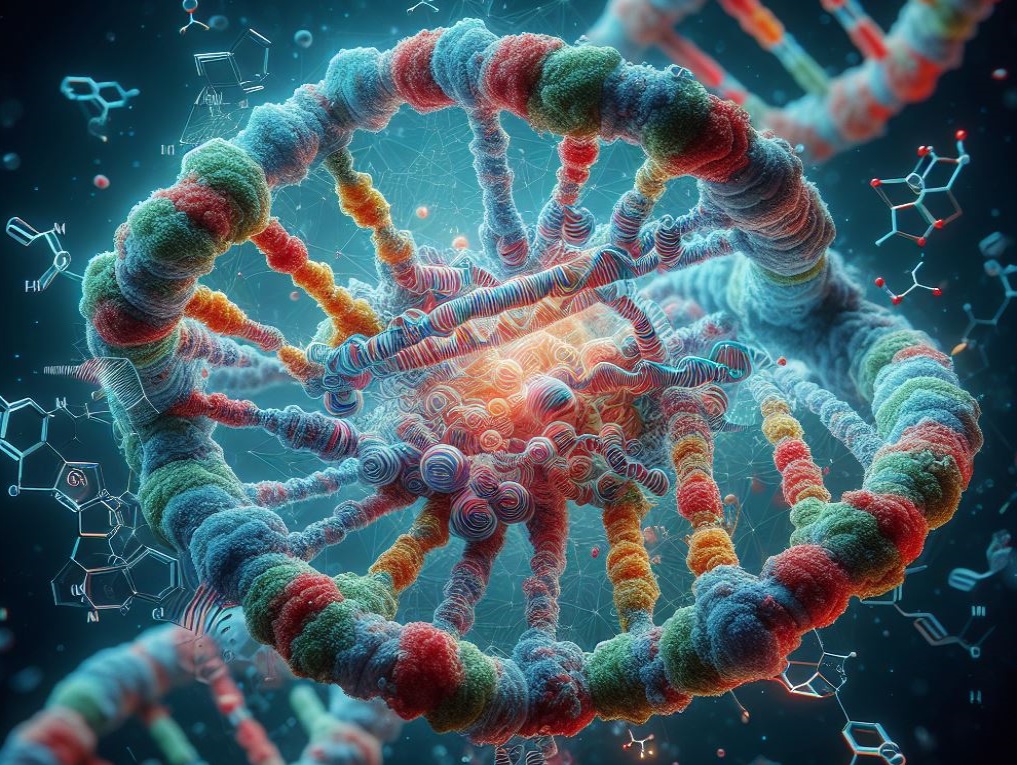In a groundbreaking work, researchers at Gladstone Institutes have used base editing, a next-generation CRISPR technology, to examine the molecular structures driving human T cells and produce a detailed map of the immune system’s functioning.
Their results, published in Nature, give comprehensive data that may assist in overcoming the shortcomings of the immunotherapies available today and develop novel targets for pharmaceuticals to treat various illnesses, such as cancer and autoimmune disorders.
The researchers, led by Gladstone Senior Investigator Alex Marson, MD, PhD, delved deeply into T-cell DNA to identify certain nucleotides, which are fundamental building blocks of genetic information in DNA and affect how immune cells react to stimuli. All told, scientists examined over 100,000 locations spanning around 400 genes present in viable human T cells.
As nucleotides are the building blocks of proteins in cells, scientists have been able to discover the precise places inside proteins that regulate immunological responses, which are vital for health. The findings represent a target that can be hit with upcoming immune-suppressive therapies.
We’ve created astoundingly precise and informative maps of DNA sequences and protein sites that tune actual human immune responses.
Our mapped sites provide insights into mutations found in patients with immune disorders. The enormous genetic dataset also works as a sort of cheat sheet, explaining biochemical code that will help us program future immunotherapies for cancer, autoimmunity, infections, and beyond.
Alex Marson, MD, PhD
Also Read| CRISPR – Clustered Regularly Interspaced Short Palindromic Repeats
Because T cells are essential for immune response and control, researchers studying complex illnesses like cancer or immunological disorders are keen on studying T cells. The Marson group and others have been using the CRISPR gene-editing technique for the past ten years to investigate the functions of basic immune cells. To provide a much more detailed and high-resolution image for this study, the researchers went one step further and used a more recent CRISPR-based technique called base editing to make more precise modifications to hundreds to thousands of DNA locations throughout specific genes.
According to Ralf Schmidt, MD, co-first author of the publication, results have significant therapeutic relevance because primary T cells from human blood donors were used in the study. Schmidt was a postdoctoral researcher at Gladstone Institutes before becoming a medical fellow at the Medical University of Vienna.
This study is zooming into the genetic basis of immune cell functions. We can now interrogate T cells at nucleotide resolution, generating blueprints for drug development, diagnostics, and further scientific endeavors.
Ralf Schmidt, MD
Also Read| UK approves first in the world CRISPR treatment for diseases – Casgevy
With over 100,000 locations on T cells producing enormous pools of data, computational genomics became an essential component of the research. Co-first author Carl Ward, PhD, a Gladstone postdoctoral researcher, oversaw the team’s work in this field, focusing on critical cell function metrics to produce what he thinks will be an invaluable resource for immunologists and pharmaceutical firms alike.
We can now assign functions to specific mutations that had been a mystery. Our detailed functional maps also can be combined with existing datasets and AI tools to amplify our discoveries and predict new avenues of investigation.
Carl Ward, PhD
Also Read| Sickle Cell Disease: FDA approves first CRISPR gene therapies
Our tools for solving disease are going to get better and better. We’re nearing a point where we can use these maps to design therapies that can tune up the T cell function for cancer treatments or tune it down to treat autoimmune disease.
According to Carl Ward, the recent Nature paper is only the beginning of a fresh wave of research on immune cells.
A note on the study
The paper, “Base editing mutagenesis maps functional alleles to tune human T cell activity,” was published in Nature on December 13. In addition to Alex Marson, Ralf Schmidt, and Carl Ward, authors are Rama Dajani, Zev Armour-Garb, Mineto Ota, Vincent Allain, Rosmely Hernandez, Galen Xing, Laine Goudy, Charlotte Wang, Yan Yi Chen, Chun Jimmie Ye, Luke A. Gilbert, Justin Eyquem, Jonathan K.
Source: Gladstone Institutes News
Journal Reference: Schmidt, R., Ward, C. C., Dajani, R., Ota, M., Allain, V., Hernandez, R., Layeghi, M., Xing, G., Goudy, L., Dorovskyi, D., Wang, C., Chen, Y. Y., Ye, C. J., Shy, B. R., Gilbert, L. A., Eyquem, J., Pritchard, J. K., Dodgson, S. E., & Marson, A. (2023). Base-editing mutagenesis maps alleles to tune human T cell functions. Nature, 1-8. https://doi.org/10.1038/s41586-023-06835-6
Last updated:




